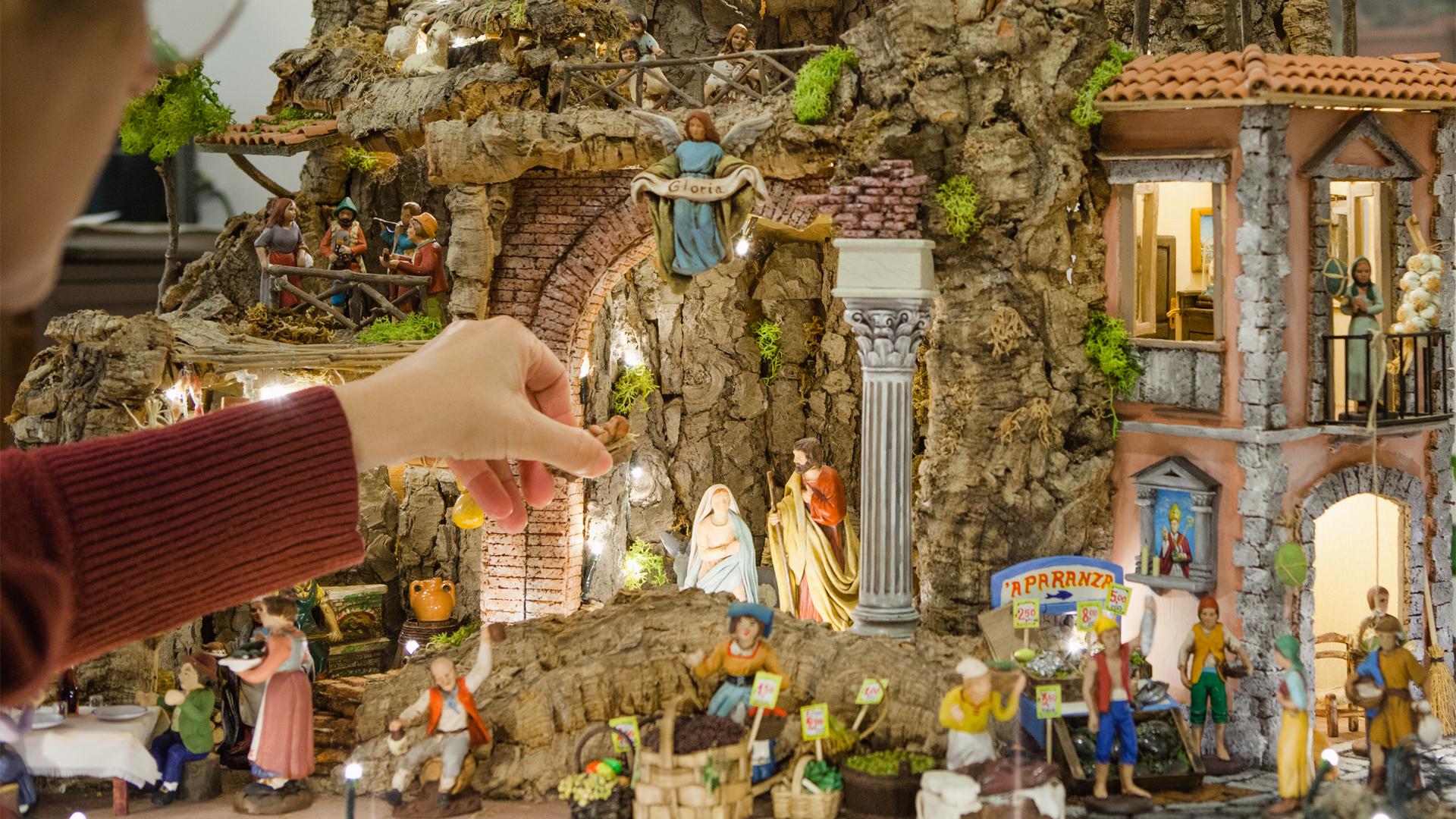Dating back to the Middle Ages, presepi honor the birth of Christ
During the Christmas season in Italy, churches, squares and homes are decorated with presepi, meaning “mangers” in English, elaborate figurine set ups depicting the birth of Jesus. But, these Nativity scenes go beyond just the traditional characters of the Baby Jesus, Mary, Joseph, the Three Wise Men and maybe a stable animal or two. In Italy, presepi take on a larger than life aspect and are most often realized with an adjoining village complete with fake grass, lighting, nature backdrops, running water and multiple figurines.
In Naples, one of the country’s oldest cities, the tradition persists in even greater force. Located in the historic city center, the narrow, winding street of Via San Gregorio, also known as Via dei Presepi or “Christmas Alley,” is filled with hundreds of stalls selling thousands of Nativity figurines entirely handcrafted by local artisans. While the religious characters of the traditional presepe remain the most popular, contemporary and universal figurines such as pizza makers, animals, TV personalities, soccer players and politicians can also be purchased, alongside additional details like houses, trees and mountains. Small figurines are most common but certain artisans make and sell life-sized ones as well. Full Nativity scenes can be purchased anywhere from €40 to €4,000, depending on their size and level of artistry. Most of these shops, which sometimes feature artisans crafting their statuettes, are open year round. They are especially swamped during the months of November and December.
The tradition of the presepe dates back to Saint Francis of Assisi who, in 1223, created the first nativity scene depicting the infant Jesus in a manger. However, it wasn’t until the 16th century that placing presepi in houses and churches during Christmas time became commonplace. In Naples, during the 17th and 18th centuries, nativity scenes became literal works of art composed of delicate and extremely detailed handcrafted figurines, many of which can still be seen today in churches and palaces across the city.
Presepi begin to be set up across the country on December 8. However, the figurine of Baby Jesus is only placed in its crib on Christmas Eve. Certain cities also put on “presepi viventi,” living nativity scenes in which people dress up as the classic characters and act out scenes in public. Most often, these theatrical productions include live manger animals, such as donkeys and ox, and are an integral part of the Italian tradition of honoring the birth of Christ.
Asia London Palomba
Asia London Palomba is a trilingual freelance journalist from Rome, Italy, currently pursuing her master's in journalism at New York University (NYU). In the past, her work on culture, travel, and history has been published in The Boston Globe, Atlas Obscura, and The Christian Science Monitor. In her free time, Asia enjoys traveling home to Italy to spend time with family and friends, drinking Hugo Spritzes, and making her nonna's homemade cavatelli.

